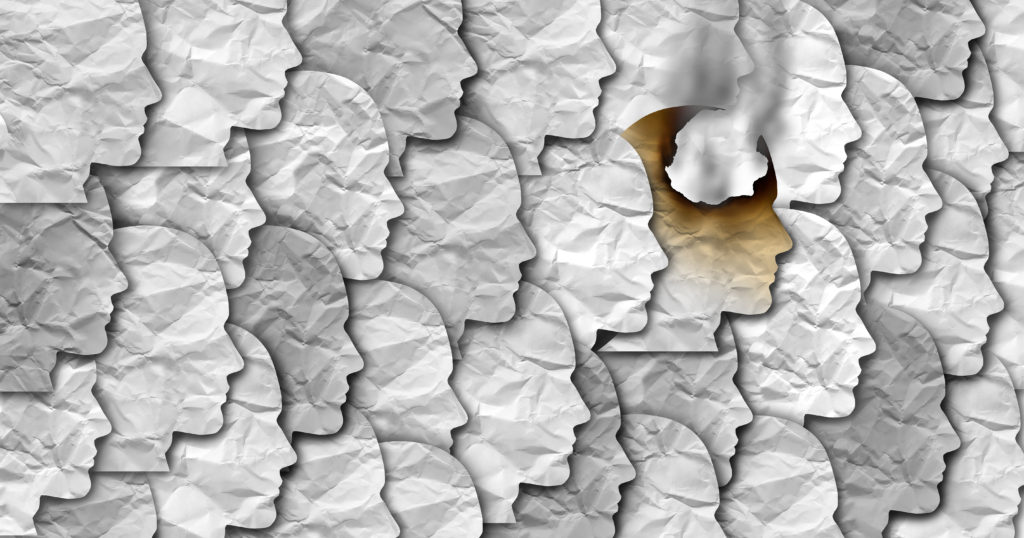Dealing with burnout is about good recovery from work, rather than focusing on being more productive or better at the work itself.
It’s pretty likely you’ve heard of burnout – and you may have even experienced it. Caused by chronic work stress, it’s characterised by signs such as emotional exhaustion, lack of energy, and loss of satisfaction with work – and has been linked to a wide range of physical conditions such as cardiovascular diseases and musculoskeletal pain.
Work stress activates our hormonal, metabolic, immune and cardiovascular systems. If these bodily responses are triggered too frequently, or for too long, they fail to return to normal and may alter our body’s immune and inflammation responses. These changes may eventually cause other physical conditions – such as coronary heart disease.
Although an overhaul of work conditions and culture is needed to address the rise in people experiencing burnout, there are still many things we can do ourselves to deal with it now. The most significant way we can prevent burnout is recovery.
Burnout is a consequence of chronic work stress over extended periods of time. It has three components:
- Emotional exhaustion (feeling tired, drained, frustrated and fatigued);
- Cynicism or detachment (caring less about coworkers or clients);
- A loss of satisfaction in one’s work.
Dealing with burnout is about recovering well from work, rather than focusing on being more productive or better at the work itself. Research continues to show how important it is to recover from work on a daily basis.
Recovery means finding time or space for yourself where you don’t engage in things that are work-related or stressful. Recovery is about bringing physiological responses, such as cortisol (a key stress hormone), back down to baseline levels. Proper recovery helps you feel more energetic and enthusiastic to face another day at work. Recovery can take place both during the workday (internal recovery) and outside of work (external recovery).
Types of recovery from burnout
Internal recovery is about giving ourselves relief from stress by using short periods of time during work to reduce our body’s stress responses. This can include taking short breaks, doing breathing exercises, or switching tasks when you’re feeling mentally or physically exhausted. So, if you have a few minutes spare at work between tasks or meetings, you may be better off trying to relax rather than checking your emails and experiencing new stressors.
After work, we have the opportunity for external recovery. These are things we do outside of work to help relieve stress. Instead of keeping on top of work and emails, external recovery may include doing any activities you enjoy. These might include watching TV, reading, or socialising – as long as these activities don’t encourage you to think (and stress) more about work.

ViDI Studio/ Shutterstock
The key to good recovery is choosing activities based on how they make you feel. If social media creates negative feelings, don’t check it during your work breaks or after work. If socialising with certain people makes you feel drained, this isn’t going to help you recover.
Daily recovery is also important. Research shows the energy gained from the previous day’s after-work activities helps manage the day’s work stress. But it’s important to know that it’s not the amount of time spent on recovering, but the quality of these activities.
It’s important to do things that make you happy or content as you are doing them – and doing them for yourself. Research has found that picking recovery activities you find personally satisfying and meaningful is more likely to help you feel recovered by the next morning.
Read more… To reduce stress and anxiety, write your happy thoughts down
What happens to your body when you’re stressed – and how breathing can help
Tai chi health benefits? What the research says
Daily recover from burnout activities
Thinking about what you do after work to recover – and whether these activities really are helping you recover – is key. There are four types of recovery experience that explain how and why recovery activities work:
- Psychological detachment (not thinking about work),
- Relaxation (taking a walk in nature, listening to music, reading a book, doing nothing on the sofa)
- Mastery (such as seeking out opportunities to do things unrelated to work such as learning languages or pursuing sports and hobbies),
- Control (choosing how to spend your time and doing things the way you want to do them).
It’s important to note that psychological detachment is core to recovery – but it’s not as easy to achieve as it sounds. For example, smartphone use after work can interfere with recovery because it blurs boundaries between work and home, stopping psychological detachment from work taking place. Similarly, meeting friends and socialising to relax will not allow psychological detachment if the conversation focuses on complaining about work.
Some recovery experiences are more suited to different people. For example, sports and exercise have been shown to be more effective for workaholics than non-workaholics, possibly because they make psychological detachment from work easier.
If you don’t feel you have much control over your job, psychological detachment and mastery experiences have been shown to be the most effective for recovery. If you feel exhausted due to time pressures at work, relaxation is most protective. People can also personalise and pick the recovery activity that suits them and provides them with the best antidote to their particular form of work stress and burnout.
With burnout, emotional exhaustion typically happens before other stages. It’s the easiest to identify, and easier to change than the other stages. So if you feel emotionally exhausted after work every night – and don’t recover by the morning – your recovery is incomplete. If this is the case, it might be worth taking a closer look at the quality of the after-work activities you’re doing.
Even if you don’t have a lot of time, it’s still important to carve out a little time for yourself to do something you find satisfying. Taking time to recover is shown to help people feel more engaged at work, and protects against the longer-term consequences of work stress and risk of burnout.
Rajvinder Samra, Lecturer in Health, The Open University
This article is republished from The Conversation under a Creative Commons license. Read the original article.

